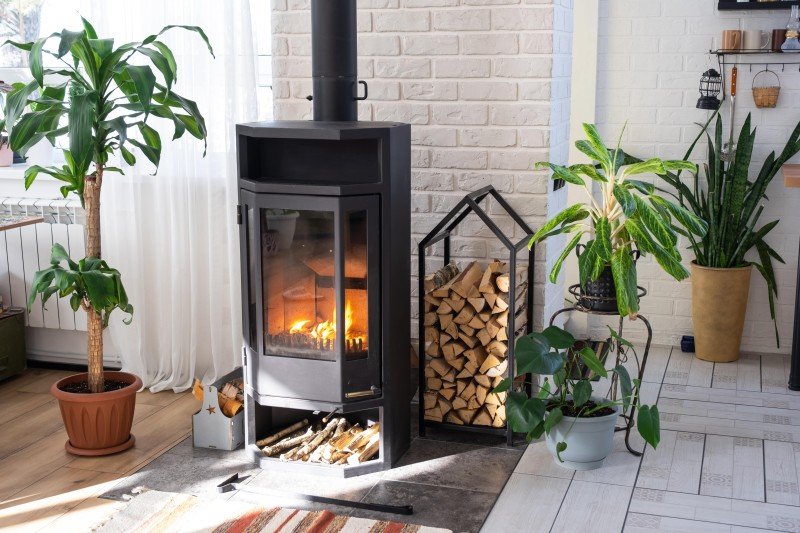The Fireplace: A Warm Embrace of Tradition and Comfort
Fireplaces have actually been an important part of human habitation for centuries, acting as a source of warmth, an event location, and a sign of comfort. While the modern variations may vary remarkably from their ancient forefathers, the appeal of a fireplace endures. This post checks out the numerous elements of fireplaces, including their history, function, types, and maintenance, while also resolving often asked questions.
The Evolution of Fireplaces
Fireplaces date back to prehistoric times when open flames were used for cooking, heating, and defense from wildlife. Over the centuries, fireplaces developed from basic fire pits to the advanced performances we see today. Here is a quick timeline of their development:
- Prehistoric Era: Cavemen utilized open flames for heat and cooking. visit these guys and smoke typically blew into dwellings.
- Middle Ages: Stone and brick fireplaces became common in homes and castles, incorporating chimneys to carry smoke outside.
- Renaissance: Elaborately developed mantels emerged, and fireplaces became centers of social interaction.
- Industrial Revolution: Innovations in heating products resulted in a variety of styles and performances.
- Modern Era: The development of natural gas, electric, and bioethanol fireplaces provided cleaner options to traditional wood-burning units.
Table 1: The Evolution of Fireplaces
| Age | Qualities |
|---|---|
| Ancient Era | Open flames for warmth and cooking |
| Middle Ages | Stone and brick structures with early chimneys |
| Renaissance | Elaborate mantels, social centers |
| Industrial Revolution | Varied designs, introduction of brand-new materials |
| Modern Era | Gas, electric, and bioethanol options |
The Purpose of a Fireplace
Fireplaces serve dual functions: they offer physical heat and produce an emotional environment. Property owners typically gather around the fireplace to bond, share stories, and enjoy a cozy setting. The glow of a fire can be relaxing, contributing to a sense of relaxation and intimacy. Beyond personal enjoyment, fireplaces likewise provide practical advantages, including:
- Home Heating: Effective heat source, particularly in cooler climates.
- Increased Home Value: A well-designed fireplace can boost the visual worth of a home.
- Emergency situation Heating: In case of power blackouts, wood-burning fireplaces can function as a crucial heat source.
- Visual Appeal: A focal point that contributes to interior decor.
Types of Fireplaces
Today, fireplaces come in numerous styles and fuel types, accommodating a varied variety of choices and settings. Here are some common types:
Wood-Burning Fireplaces:
- Traditional fire pits
- Classic masonry fireplaces
- Require substantial maintenance and chimney upkeep
Gas Fireplaces:
- Available in both direct vent and ventless varieties
- Simpler to utilize and keep than wood-burning fireplaces
- Provide instant heat with a flick of a switch
Electric Fireplaces:
- Offer associated heat sources without real flames
- Typically developed to simulate traditional fireplaces
- Suitable for smaller spaces and homes without a chimney
Bioethanol Fireplaces:
- Use bioethanol fuel, offering a sustainable alternative
- Require no ventilation and can be put anywhere
- Safe and easy to keep
Table 2: Types of Fireplaces
| Type | Fuel Source | Functions | Maintenance Requirements |
|---|---|---|---|
| Wood-Burning | Wood | High ambiance, heat source | Routine chimney cleansing |
| Gas | Gas or gas | Instant heat | Very little, periodic servicing |
| Electric | Electricity | Easy setup | Extremely low upkeep |
| Bioethanol | Bioethanol fuel | Ventless, portable | Low, mainly cleaning up |
Upkeep and Safety Considerations
Owning a fireplace includes certain obligations, particularly regarding its safe operation and long-lasting maintenance. Here are essential maintenance pointers and safety standards:
Maintenance Tips:
- Annual Inspection: Always have your chimney and fireplace checked at least once a year by a qualified service technician.
- Routine Cleaning: Clean out ashes and particles after each use, and make sure the flue is open before starting a fire.
- Look for Cracks: Inspect masonry for fractures or damage to prevent structural concerns.
- Use Proper Fuel: Only use dry, seasoned wood for wood-burning fireplaces; do not burn treated wood.
Security Guidelines:
- Install Smoke Detectors: Ensure smoke alarm are functional, testing them monthly and changing batteries as needed.
- Keep a Fire Extinguisher: Have one nearby, even if a fireplace is utilized infrequently.
- Monitor Flames: Never leave a fire ignored, and make sure children and family pets are kept an eye on around the fireplace.
Often Asked Questions (FAQs)
1. How can I decrease smoke from a wood-burning fireplace?
To reduce smoke, usage dry, seasoned wood, and make sure that your chimney is tidy and unblocked.
2. Is Fireplace Retailers UK to use gas fireplaces during a gas leak?
Never ever utilize a gas fireplace throughout a gas leak. Instantly evacuate click through the up coming page and contact gas services for assistance.
3. Can I set up an electric fireplace myself?
Electric fireplaces are typically simple to set up, but it is suggested to seek advice from experts to make sure security and compliance with local building regulations.
4. What is the best kind of fireplace for small spaces?
Electric fireplaces or bioethanol designs are typically best for small areas, as they do not need extensive ventilation or structural modifications.
Fireplaces have transcended their initial function of providing heat to end up being cherished aspects of home style and domesticity. They stimulate memories of heat, celebrations, and togetherness while supplying practical benefits that enhance modern living. By understanding the numerous types of fireplaces, their maintenance, and security practices, homeowners can delight in the timeless appeal of this precious function for generations to come.

